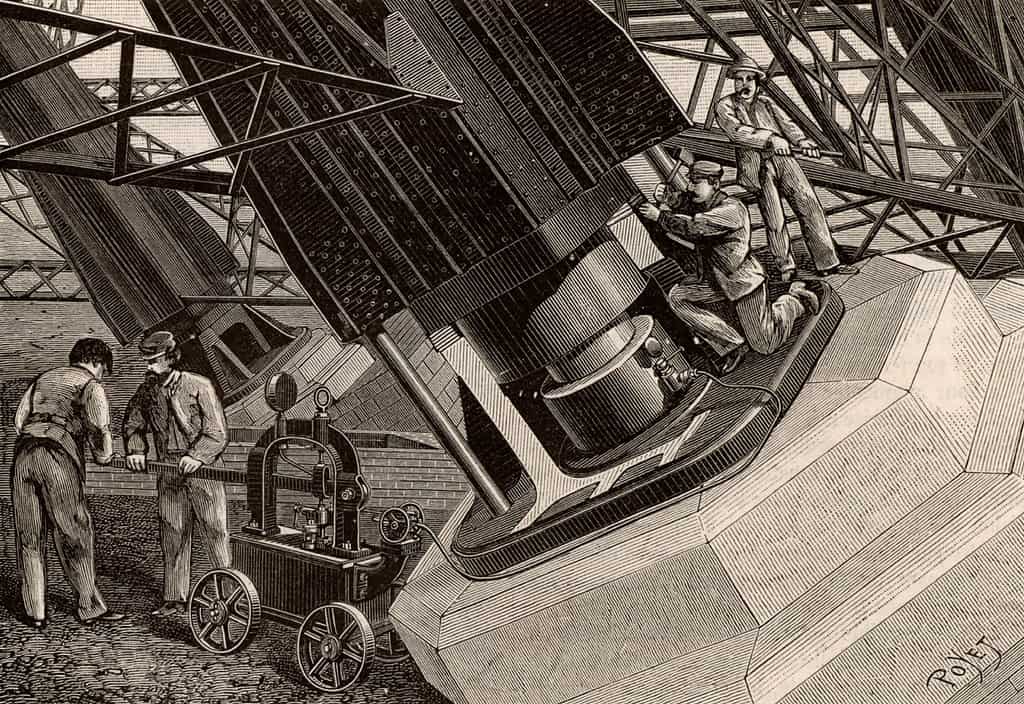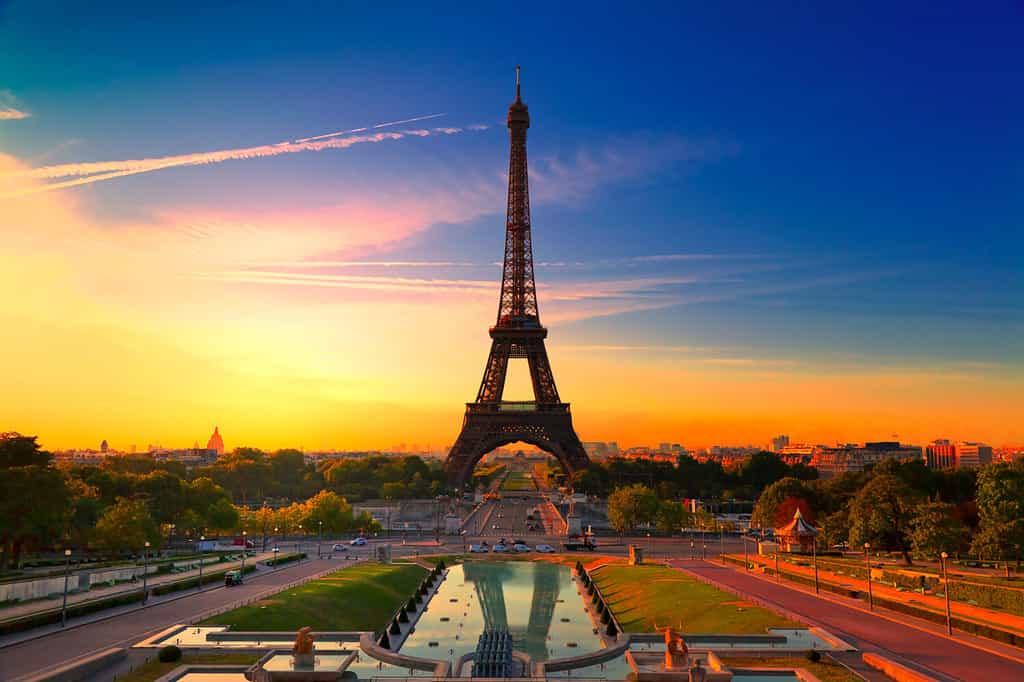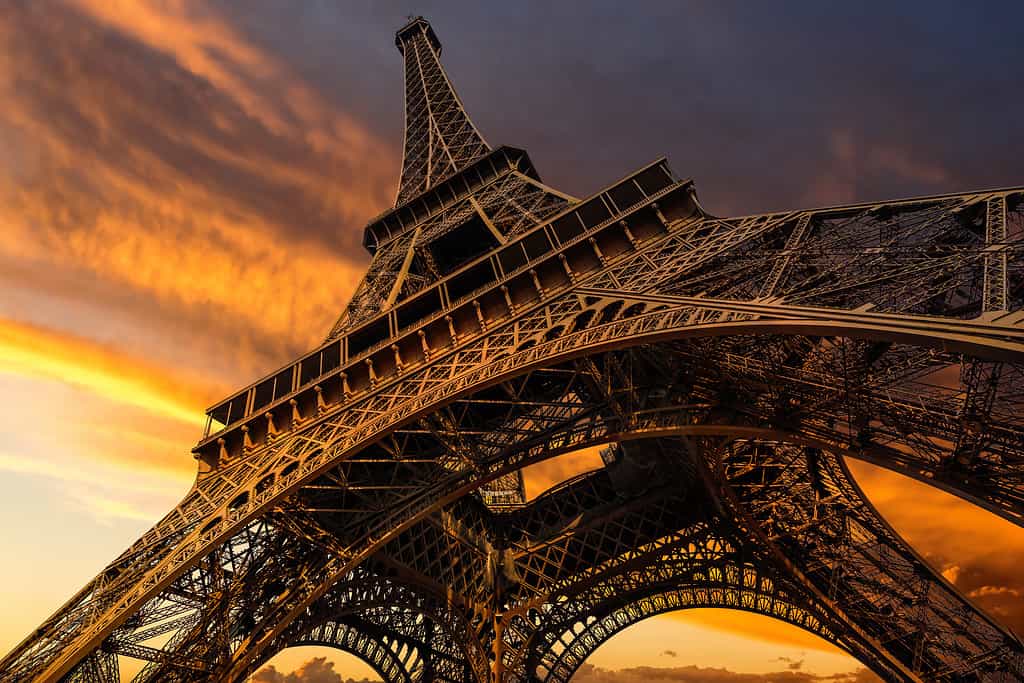The Eiffel Tower is perhaps the most visited landmark in the world. Paris is one of the most visited cities in the world and it makes sense that the Eiffel Tower, towering (no pun intended) over the surrounding buildings, makes a huge impact on residents and visitors alike. It has stood as a symbol of Parisian life and culture since its inception.
People post selfies with the tower in the background and they have gone up to the top and witnessed the entire city of Paris in its splendor. But many have no idea how and why the Eiffel Tower was built in the first place. Most people don’t know the history behind the tower, and how, more than 130 years later, it has become a symbol of Paris and France.
Let’s explore how and why the Eiffel Tower was built. We’ll also give you some information on the wildlife in the area, and some things to do in Paris, France.
Location of the Eiffel Tower

In 1991, the Eiffel Tower was made into a UNESCO World Heritage Site.
©Vladislav Zolotov/iStock via Getty Images
The Eiffel Tower is located in Paris, but we already know that. The exact location is what we’re wondering about. You can see it from all over the city, as it’s the tallest structure in the city. The Eiffel Tower’s exact location is at Champ de Mars.
There are various ways to get to the Eiffel Tower. You can take the metro and get off at Trocadero. From there you can head to Place du Trocadero and Trocadero Gardens for fantastic pictures of the Eiffel Tower at a distance. Cross Pont D’Iena and you can look up at the grandiosity of the tower. Other metro stops that are close by you can get off at are Bir-Hakeim, Ecole Militaire, Pont de l’Alma, or Champ de Mars-Tour Eiffel.
Once at the Eiffel Tower, you can go up in two ways — use the stairs or take the elevator. You can stop at the second level, but going up to the third level is way more cool. You will get to see a view of the entire city of Paris. There is also a restaurant called the Jules Verne you can dine at. Afterward, get some cheese, grapes, and crackers with a bottle of wine, and have a cute picnic at Champ de Mars with the Eiffel Tower in the background. It will serve as a nice romantic start to the weekend with your loved one, perhaps.
History of the Eiffel Tower

The Eiffel Tower was the world’s tallest building when it opened for the 1889 World Fair.
©© Getty Images/PHOTOS.com>> via Getty Images
The World Fair took place in Paris in 1889, on the hundredth anniversary of the French Revolution. A few years before, the people in charge of creating a fantastic fair were swirling ideas of how to wow the world when everyone arrived in the city. They turned to engineer Gustave Eiffel with a budget to construct a metal tower on the Champ de Mars. Eiffel was paid 1.5 million francs and another 5 million francs would be given to him over 20 years.
The construction of the tower was not without controversy, however. Some people were against the tower being built because they thought an engineering feat like that would be impossible. Others, mainly artists, writers, and musicians, protested the tower, calling it a future eye soar and ridiculous structure. Eiffel himself responded to his critics and compared his structure to the Egyptian pyramids by stating that if the pyramids were grandiose, the tower could also be equally grandiose in Paris.
Construction and Later History
Construction began on January 28, 1887, and was completed on March 15, 1889, with the opening on March 31, 1889. Over 300 people worked on the construction and only one person died. The tower was a hit, but it would only remain for 20 years as that is how long Eiffel’s permit lasted. In 1909, however, the city of Paris decided to keep it as it was useful for many 20th-century innovations.
During the Nazi occupation of Paris, the Nazi flag was flown at the tower, the elevator cables were cut, and all visitors were banned from visiting, effectively closing the tower for five years. As the Allies advanced into Paris in 1944, Hitler ordered the tower and the entire city to be destroyed. Luckily, the Nazi military governor of Paris refused.
Today, the Eiffel Tower is one of the most visited landmarks in the world with over seven million visitors per year.
Wildlife and Nature Around the Tower
You may think to yourself, Paris is a big city, how will there be wildlife? Paris is home to many parks, including two large parks that are immediately outside the city on either end. The Bois de Boulogne is on the western side, close to La Defense. Bois de Vincennes is on the eastern side, close to Paris Zoo.
In both of these large parks, you can find squirrels, rabbits, reptiles, insects, and rodents like mice and rats. If you want to see more exotic animals, you can head to the Paris Zoo. There are also regional parks that are outside the city of Paris but in the Île-de-France region.
You can check out the Vexin Français Regional Park, a park seven times the size of the city of Paris. You can also go to Versailles and the Hate Vallée de Chevreuse Regional Park south of Versailles. Many forest animals make their home there. Lastly, there is also the Gâtinais Français Regional Park southeast of Paris and the Oise-Pays de France Regional Park north of the city.
Things to Do in Paris

The Eiffel Tower is nicknamed “la dame de fer,” or “Iron Lady” in French.
©INTERPIXELS/Shutterstock.com
Ah, Paris! It is one of the most romantic cities in the world. Paris is unique with its cobblestone streets, its grandiose, historical landmarks, and its beautiful bridges over the Seine that connect the northern and southern halves of the city. The whole atmosphere in Paris is just awe-inspiring. It has attracted artists, writers, and fashionistas to work in the city and get inspired by the architecture, the culture, the bistros and cafes, and the surroundings that make everything so much more beautiful.
When it comes to Paris, you can’t visit the most popular landmarks in one visit. In fact, you need several visits to truly cover what makes Paris special. From the Bastille and what it means for Paris and the rest of France to the Palace of Versailles and its connection to the Bastille. Paris has several art museums — the Louvre, the Musee d’Orsay, the Pompidou, and several more.
If you want to do a tour of other landmarks, you can’t miss two of the most beautiful churches in Europe — Notre Dame and Sacre Coeur. Sacre Coeur is atop a hill, where the area called Montmartre, served as an artists’ enclave. You can also see views of the entire city from Montmartre.
Finally, you should walk down the Champs-Elysees, check out all the high-end stores, and finish off the day at the Arc de Triomphe before you waltz into a chic restaurant for a glass of wine and a delectable Parisian meal.
Fast Facts About Paris

It takes about 16,000 gallons of gold paint to cover the Eiffel Tower (which gets repainted every seven years).
©gbarm/iStock via Getty Images
- Population: 2.1 million (Urban: 10.8 million)
- Area: 40.7 square miles (Urban: 1,101.7 square miles)
- Region: Île-de-France
- Named For: Gallic tribe Parisii
- Mayor: Anne Hidalgo
Conclusion
And there you have it, that is the story of how and why the Eiffel Tower was built. The Eiffel Tower is a cultural symbol of Paris and what Paris and the whole of France stands for. The Eiffel Tower, in all its grandiosity, stands for hope and success. It stands for freedom and brotherhood. It’s a uniting symbol that echoes France’s motto of “Liberty, equality, and fraternity.”
The history of the Eiffel Tower is unique and fascinating. After more than 130 years, it has stood the test of time because it is truly more than a symbol, it’s what makes Paris the “City of Light.”
The photo featured at the top of this post is © SCStock/iStock via Getty Images
Thank you for reading! Have some feedback for us? Contact the AZ Animals editorial team.






